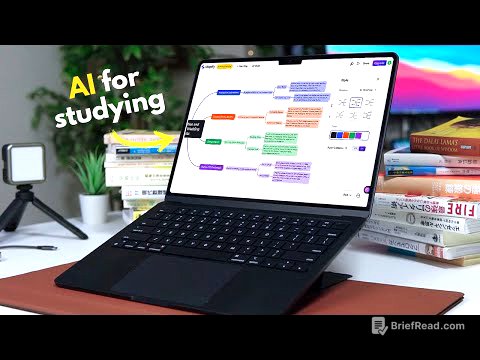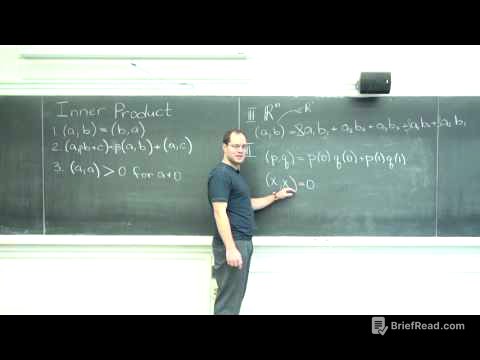TLDR;
This video shares practical strategies to overcome math anxiety and improve performance. It emphasizes the importance of mindset, smart practice, creating formula notebooks, using worked examples, breaking down complex problems, practicing mental math, reviewing mistakes, studying with others, consistency, and simulating exam conditions. By adopting these techniques, anyone can transform their fear of math into confidence and achieve better results.
- Shift your mindset from fear to challenge.
- Practice smartly by focusing on weak areas and keeping sessions short.
- Create a formula notebook for quick reference.
- Use worked examples to understand problem-solving approaches.
- Break down complex problems into smaller, manageable parts.
- Practice mental math to improve comfort with numbers.
- Review mistakes to avoid repeating them.
- Study with others for collaborative learning.
- Maintain consistency with daily practice.
- Simulate exam conditions to reduce pressure.
Shift Your Mindset [0:30]
The initial step involves transforming your mindset towards mathematics. Instead of harboring feelings of dislike, try adopting a perspective of viewing math as a challenge that you are yet to conquer. This subtle change in attitude can significantly impact your approach to studying and alleviate feelings of being overwhelmed.
Practice Smartly [0:51]
Effective practice involves identifying and focusing on your weak areas. Dedicate more time to subjects you struggle with, like geometry. Keep study sessions short, around 20 to 30 minutes, to maintain focus. If your foundational knowledge is weak, review basic formulas and timetables before tackling advanced exercises.
Create a Formula Notebook [1:17]
Creating a dedicated notebook filled with key formulas and concepts is highly beneficial. This notebook serves as a quick reference guide during practice and a valuable tool for review before exams. Regularly updating and consulting this notebook reinforces understanding and retention.
Use Worked Examples [1:32]
Before attempting practice problems, study worked examples to understand the step-by-step solutions. This approach provides a clearer understanding of how to tackle similar problems independently. Analyzing these examples helps in recognizing patterns and applying appropriate strategies.
Break Down Complex Problems [1:47]
When faced with complex problems, break them down into smaller, more manageable parts. For multi-step problems, focus on solving one step at a time. This approach simplifies the problem-solving process and reduces feelings of being overwhelmed.
Practice Mental Math [2:03]
Incorporate basic calculations into your daily routine to practice mental math. Although it may initially feel uncomfortable, this practice enhances your comfort level with numbers and improves your overall mathematical intuition. Regular mental math exercises can significantly boost your calculation speed and accuracy.
Review Mistakes [2:15]
After practicing problems, thoroughly review your mistakes. Instead of just glancing at the correct answer, take the time to understand where you went wrong and what the correct approach should have been. This practice helps prevent future errors with similar problems.
Find a Study Partner or Group [2:37]
Studying with others can significantly enhance your understanding and problem-solving skills. Collaborate with friends, do practice exercises together, and quiz each other. If you encounter a difficult problem, seek help from classmates or teachers who excel in math.
Take Consistent Action [3:00]
Consistency is crucial for success in math. Avoid cramming and instead, study a little bit every day. Make it a habit to practice daily, even if it's just for 15 to 20 minutes. Consistent practice helps you recognize patterns more easily and solve problems more quickly.
Simulate Exam Conditions [3:22]
Practice with past exam papers or sample questions under timed conditions to simulate the pressure of exams. This helps you get accustomed to the exam environment and identify areas where you need to improve. Simulating exam conditions reduces anxiety and improves performance on the actual test.









